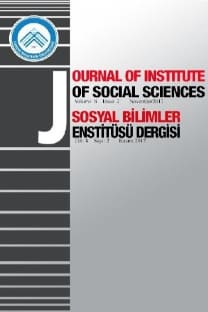Yüksek Ortaçağ’da Papa-İmparator Çatışması: Kılıç ile Âsâ’nın Savaşı
Atama Tartışması ya da Kavgası (Investitura), XI. yüzyılda Kutsal Roma İmparatoru IV. Heinrich ile Papa VII. Gregorius arasında yaşanan Kilise gö-revlilerini atamada kimin söz sahibi olacağı kavgasıdır. Bu olay, Ortaçağ Avrupa’sında seküler güçler ile dini güçler arasında yaşanan en büyük çe-kişmedir. Papa VII.Gregorius yayınladığı Dictatus Papae’da, Roma Kilisesi’nin sadece Tanrı tarafından kurulduğu, Papa Gelasisus’un ruhanî otoriteye dair görüş-lerinden hareketle, Papanın tek evrensel güç olarak tek başına kilise görevli-lerini atama ve azletme hakkı olduğu iddiasında bulunur (1075). VII.Gregorius, imparator da dahil, kendisinin Batı Avrupa’nın en büyük gü-cü olduğuna ve bu nedenle Kilise atamaları konusunda tek güç olması ge-rektiğine inanmaktaydı. XI. yüzyılın sonlarına doğru bu konuda Kilise ile Devlet arasındaki tansiyon yükseldi. Daha sonra 1075’de Papa VII. Gregorius Laiklerin atama yapmasını yasakladı. Bu eylem imparator IV. Heinrich tarafından, temsil ettiği iktidara karşı tehdit olarak algılandı. As-lında, bu olaylar aracılığıyla, tümüyle iktidar ve iktidara hangi gücün sahip olduğu sorgulanmaktaydı. IV. Heinrich, iktidarının Tanrı tarafından verildi-ği ve bu nedenle Kilise üzerinde mutlak güç sahibi olması gerektiği husu-sunda ısrarlıydı. 1076’da Gregorius IV. Heinrich’i Kilise ve Alman krallı-ğından aforoz ederek karşılık verdi. IV. Heinrich’in aforozu, taht üzerindeki rekabeti su yüzüne çıkardı ve tahtı geri almak için Ocak 1077’de İtalya Canossa’da Papa VII.Gregorius ile arasında geçecek olan dramatik karşılaş-mayı kabul etti. IV.Heinrich, tahtını geri almak için ülkesine döner dönmez Canossa’da verdiği sözleri ihlal edince, 1080’de yeniden aforoz edildi. Sonuçta IV.Heinrich’in oğlu V.Heinrich, “Atama Sorunu”nu Papa II.Calixtus ile 1122’de yaptığı Worms Konkordatosu ile karara bağladı.
Conflict Between Pope and Emporer in the High Middle Ages: War Between Sword and Scepter
The Investiture Controversy or Investiture Contest was an XI th century dispute between Henry IV, Holy Roman Emperor and Pope Gregory VII over who would control appointments of church officials. It was the most significant conflict between secular and religious powers in medieval Europe. In 1075 Pope Gregory VII asserted in the Dictatus Papae that as the Roman Church was founded by God alone, the papal power (the auctoritas of Pope Gelasius) was the sole universal power, and that the pope alone could appoint or depose churchmen or move them from see to see. Gregory VII believed that he held power over all of Western Christendom, including the emporer, and that he was the one and only authority in making church appointments. As the eleventh century moved on, tensions grew between the church and state on this issue. Then, in about 1075, Pope Gregory VII banned all lay investiture. This act angered emperor Henry IV, as it was a threat towards the imperial power held by him. Out of these events, the whole idea of kingship and what powers it actually held came into question. Henry IV insisted on his authority as a divinely appointed sovereign to involve himself in the Church of his nation. In 1076 Gregory responded by excommunicating Henry IV, removing him from the Church and deposing him as German king. Henry IV's excommunication allowed rival claimants to his throne to surface and, to retain his crown, Henry IV acceded to Pope Gregory VII at a dramatic encounter at Canossa, Italy in January 1077. Henry IV returned home to re-establish his power but quickly broke the promises he had made at Canossa and, in 1080, he was again excommunicated. Finally, Henry IV's son, Henry V, settled the “Investiture Question” with Pope Calixtus II with the Concordat of Worms in 1122.
